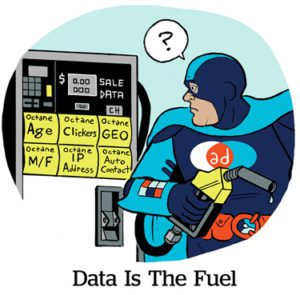The future of TV is addressable, meaning one-to-one ad targeting to a device, across not just connected TV inventory but also linear inventory.
But addressable TV remains a small piece of buying, which the industry addressed at Paramount’s Addressable Now summit in New York City on Tuesday.
Addressable TV sounds good in theory.
When agency clients finally try it out, they’re generally happy with the performance of their linear addressable campaigns, said Jen Soch, executive director of channel solutions at GroupM.
“Every client I can sell in that will stay in loves [addressable],” Soch said. Those clients have seen a huge change in the impact of their media campaigns, she added.
But challenges in scale, arising from data interoperability and good old fashioned territorialism and resistance to change, are blocking addressable TV’s rise.
Trained on age and gender demos and daypart buys, linear advertisers are hesitant to buy TV media the same way they buy digital.
Addressable TV can only scale if one of two things happen: Linear TV dies, or TV moves to impression-based measurement, said Tracey Scheppach, CEO of the agency Matter More Media, who was also speaking at the summit.
And the former isn’t going to happen, Scheppach added.
Meaning it’s time for TV to join the digital advertising and streaming world in moving to impression-based buying.
Easier said than done, though.
Growth isn’t linear
Addressable TV is about targeting ads to individual devices, not people.
Conversations about linear TV media buying are moving from dayparts to impressions, GroupM’s Soch said.
But the biggest hurdle to bringing linear buyers into addressable TV is convincing them to think beyond traditional age and gender demos, Scheppach said.
For more traditional buyers, a logical stepping stone toward addressable TV is data-driven linear (DDL). DDL is more advanced than traditional linear buys because it implements more audience data in the media planning process, but it still isn’t one-to-one addressable.
Eliciting more advertiser demand for DDL is where agencies have more work to do, she added.
Just like connected TV platforms pitched themselves as offering “incremental” reach to linear, addressable TV is pitching itself as an add-on to linear.
Buyers shouldn’t scrap linear. But they can maximize incremental reach and scale by bringing impression-based buying to linear TV campaigns, said Matthew Van Houten, SVP of sales at DirecTV, at Tuesday’s event.
He cited an automotive marketing client that ran across DISH, DirecTV and Ampersand using a first-party audience segment, which it then followed with a digital retargeting campaign to measure incremental reach and lift on streaming. Compared with the national campaign alone, the retargeting campaign garnered an 87% increase in audience reach and a 22% lift in sales, Van Houten said.
Or, connected TV and linear addressable can work together: Linear addressable can limit ad wastage. Then, the data can inform deduplicated audience reach on streaming channels for maximum yield, said Christopher Monteferrante, VP of programmer partnerships and advanced advertising at Spectrum Reach.
“Digital [streaming] is the ad industry’s shiny new object,” he said, but buyers are looking for incremental growth. “If linear addressable is missing from [a buyer’s] media mix, they’re missing out on a huge opportunity to extend their reach,” Monteferrante said.
While addressable TV struggles to gain adoption from buyers, one of its biggest roadblocks isn’t cross-platform measurement but data interoperability. (Or, well, the lack thereof.)
Publishers and programmers are historically reluctant to share more first-party data than they have to with partners because they see it as a competitive value prop. That leaves data siloed off in gardens, whether or not those gardens are “walled,” said Carol Hinnant, chief revenue officer of Comscore.
The lack of data interoperability is addressable TV’s biggest problem, Hinnant said, “and that’s doing a huge disservice to addressable TV.”
It’s not just CTV buyers who are vigorously demanding more data transparency into their media buys. Measurement providers also recognize the lack of data confidence as a contributing factor to linear buyers’ hesitations to moving out of their demo-based comfort zones.



















